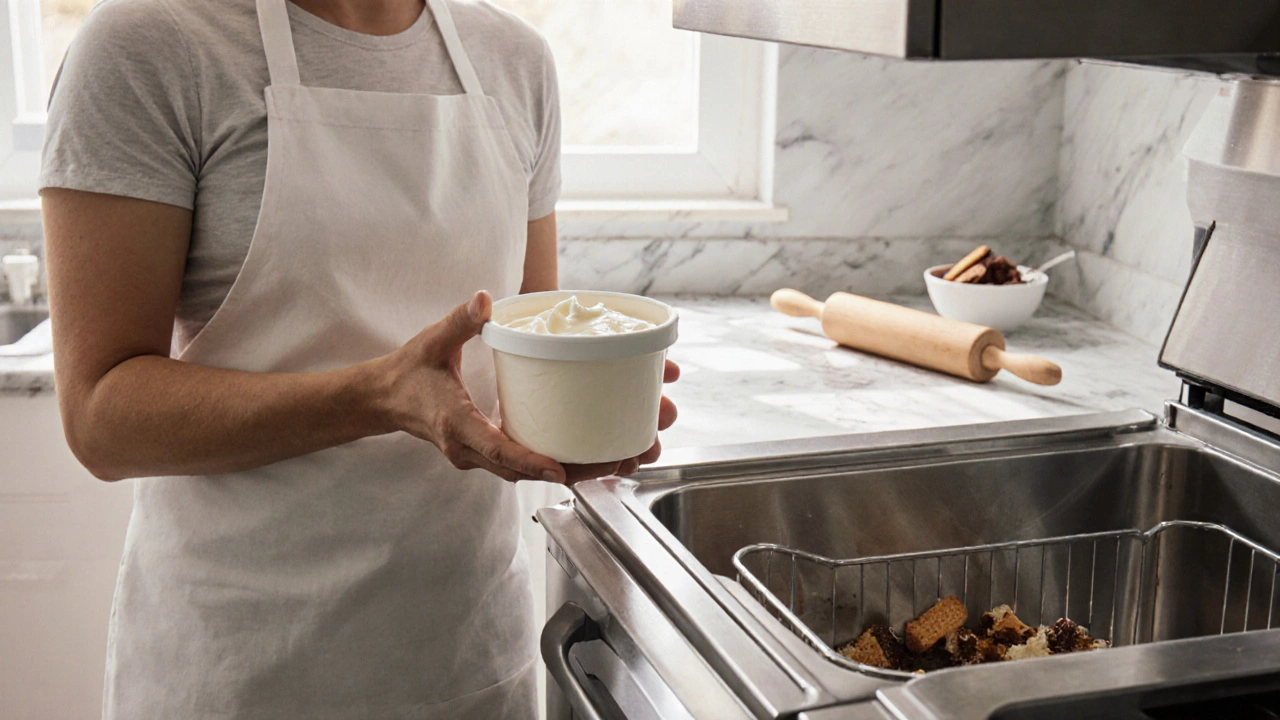
Can You Freeze Mascarpone Cheese? Essential Tips for Tiramisu Lovers
Learn if mascarpone cheese can be frozen, how to do it safely, and tips for preserving texture in tiramisu and other desserts.
When working with freeze mascarpone, the act of freezing mascarpone cheese to extend its shelf‑life while maintaining texture and flavor, you’re tackling a common kitchen challenge. Also called mascarpone preservation, this technique is essential for bakers who want to keep their dairy ready for any recipe. Below we’ll break down the how‑to, why it works, and what pitfalls to avoid.
First, meet the star of the show: Mascarpone Cheese, a rich, Italian cream cheese made from cream and a mild acid, prized for its buttery mouthfeel. Its high fat content makes it prone to separation when warmed, so proper freezing is a must. Next up is Refrigeration, the low‑temperature storage method that slows bacterial growth and keeps dairy fresh. While refrigeration keeps mascarpone safe for a week, freezing can push that window to several months. Finally, Food Safety, the set of practices that prevent contamination and spoilage in food handling guides every step, from container choice to thawing method.
Freezing isn’t just about buying in bulk; it’s a way to lock in the creamy texture that makes mascarpone so desirable in dishes like tiramisu, frosting, and especially Cheesecake, a dessert that relies on smooth, stable cheese mixtures for a velvety bite. When you freeze the cheese, the water molecules form tiny crystals that pause enzymatic activity, effectively pausing spoilage. The result is a product that, once thawed, still spreads easily and blends without grainy lumps.
freeze mascarpone works best when you follow three simple rules: use an airtight container, label with date, and store at a stable -18 °C (0 °F) or lower. Airtight containers prevent freezer burn, which can otherwise create off‑flavors and a dry surface. Labeling ensures you use the cheese within its optimal window—usually three months for best quality. Consistent temperature avoids the “temperature shock” that can cause fat separation.
Now, let’s talk thawing. Slow, controlled defrosting in the refrigerator is the safest route. Moving the cheese from freezer to fridge and letting it sit for 12‑24 hours lets the crystals melt gradually, preserving the smooth texture. A quick‑thaw in warm water is tempting but risks uneven melting and grainy patches—plus, it can push the cheese into the danger zone for bacterial growth.
Once thawed, give the cheese a gentle stir. If you notice a thin layer of liquid on top, that’s whey separating; simply fold it back into the mix. For recipes that demand ultra‑smooth mascarpone, like a classic Italian tiramisu, run the cheese through a fine mesh sieve or blend it briefly with a hand mixer.
What about using frozen‑then‑thawed mascarpone in baked goods? The good news is that most heat‑based recipes, such as cheesecakes or baked desserts, are forgiving. The brief heating step re‑emulsifies any tiny fat crystals, delivering the same silky mouthfeel as fresh cheese. However, for no‑bake applications like frosting, you may want to add a splash of heavy cream after thawing to restore extra softness.
Lastly, keep an eye on storage time. While the cheese remains safe beyond three months, flavor and texture gradually decline. If you notice a sour smell, discoloration, or excessive liquid, discard it. Trust your senses—food safety is the final gatekeeper.
Below you’ll find a curated list of articles covering everything from the science of freezing dairy to practical tips for using thawed mascarpone in your favorite desserts. Dive in to sharpen your kitchen skills and keep your creamy creations at their best.

Learn if mascarpone cheese can be frozen, how to do it safely, and tips for preserving texture in tiramisu and other desserts.